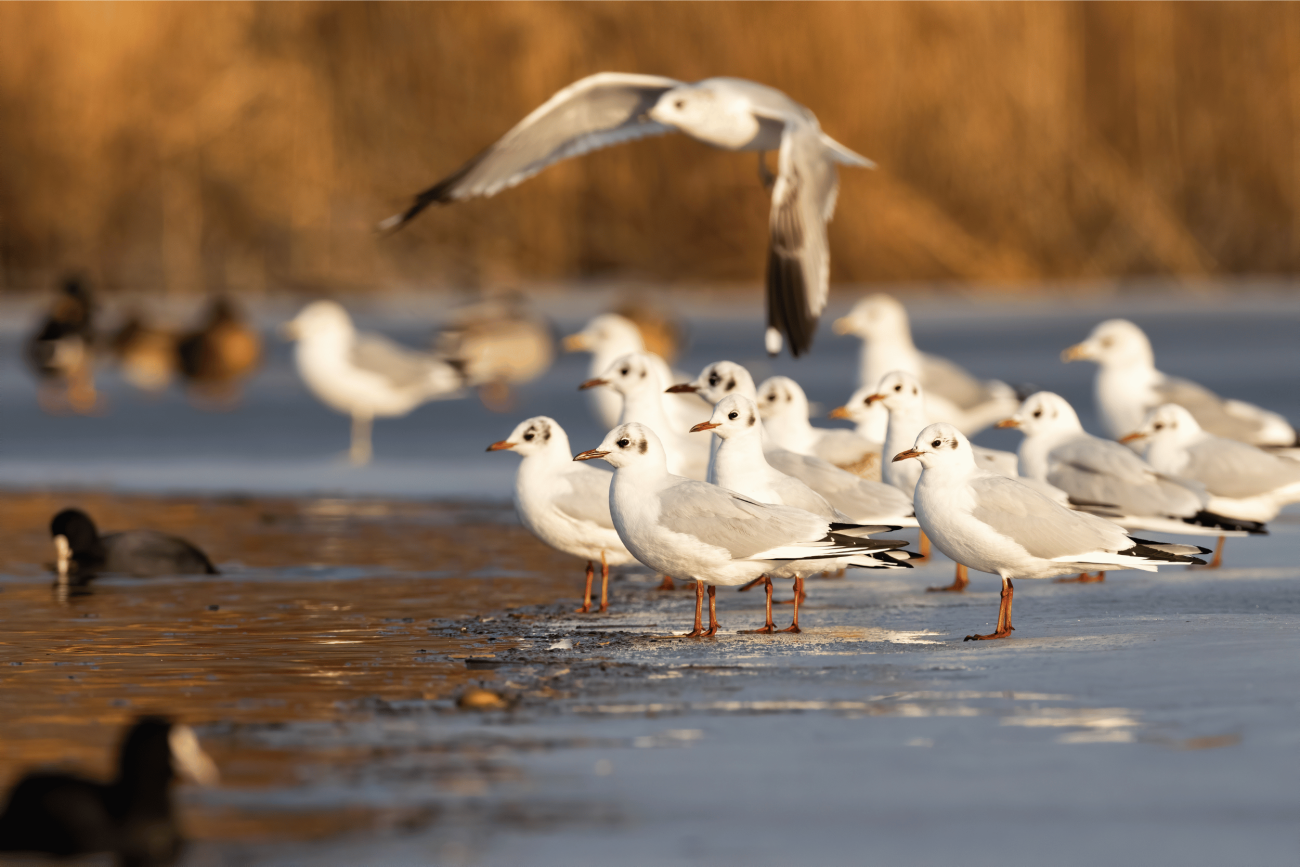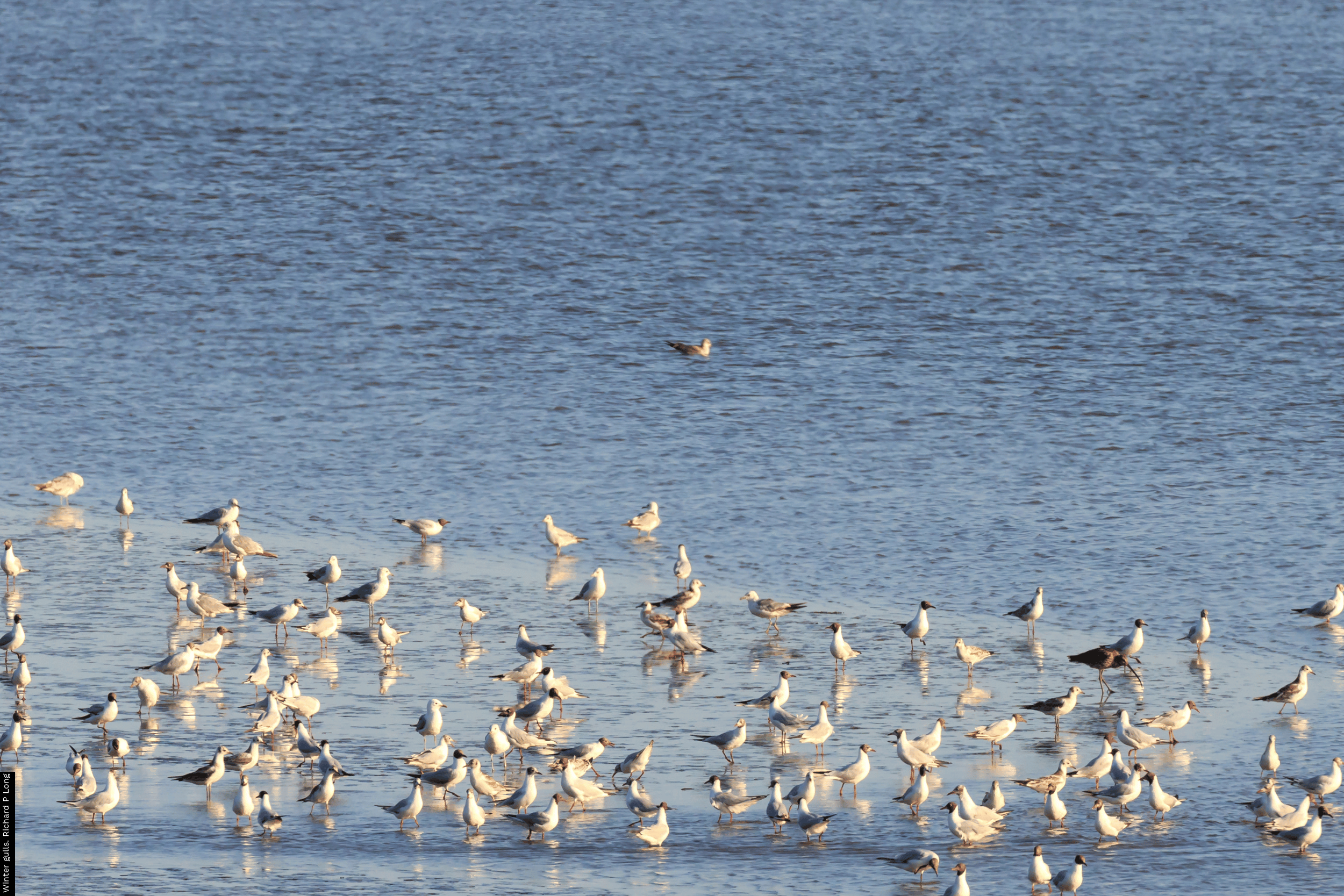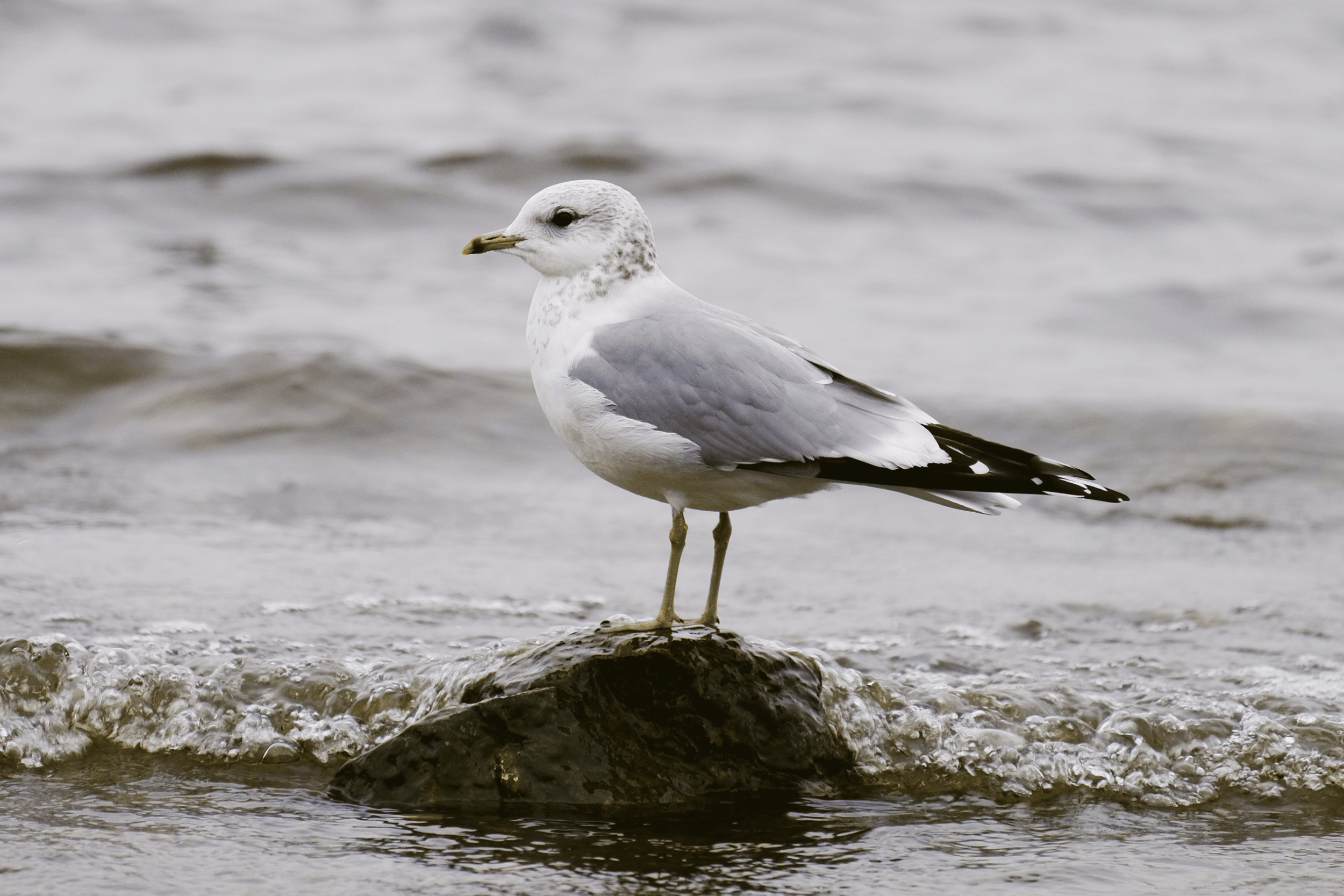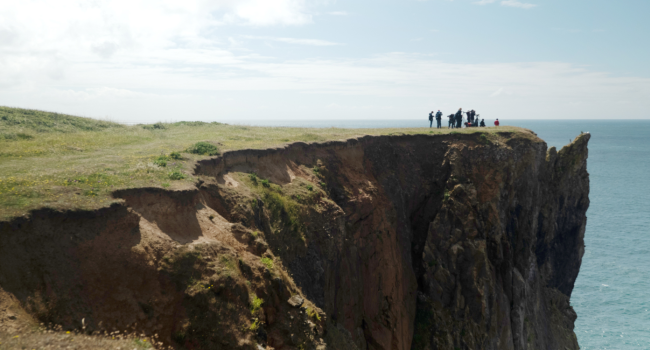About WinGS
History of the Winter Gull Survey
BTO carried out the first Winter Gull Survey (WinGS) in the winter of 1952/53, to collect data on wintering gull populations in the UK. Since then, the survey has been carried out around every 10 years. However, the most recent survey was from 2003/04–2005/6, and a substantial gap in our knowledge of our wintering gulls has developed.
To address this, we will be running WinGS over the winters of 2023/24 and 2024/25, to collect up-to-date information about the five most common gull species in the UK in winter. In 2024, WinGS will also collect data during the autumn. This will be the first time that data have been collected at this time of year.

Aims of the Winter Gull Survey
The project’s overarching aim is to provide updated information on the numbers and distributions of wintering gulls in the UK, its constituent countries, the Channel Islands and the Isle of Man.
WinGS focuses on the six most numerous and widespread gull species in the UK during the winter months: Black-headed Gull, Mediterranean Gull, Common Gull, Herring Gull, Lesser Black-backed Gull and Great Black-backed Gull.
Information collected in this winter’s survey will start to fill the gaps in our knowledge which have developed since the last survey 20 years ago. This is particularly important given that gulls have been impacted by the ongoing outbreak of highly pathogenic avian influenza (HPAI), and we are still seeking to understand the full implications of this.
The updated information will help our scientists to:
- Understand how wintering populations of gulls have changed over the last 20 years
- Identify key autumn and wintering sites for these species, and inform their conservation
- Determine how gulls have been impacted by HPAI.
Core data collected by Winter Gull Survey counts
The 2023–2025 WinGS will involve one core count in January 2024 or 2025, at known major – ‘key’ – roost sites, most of which will have been covered by previous surveys. Key roost sites will include large estuaries, lakes and reservoirs.
Gulls will be counted as they arrive to roost at dusk, and volunteers (often working as part of a team) will record the five commonest gull species in the UK (Black-headed Gull, Common Gull, Lesser Black-backed Gull, Herring Gull and Great Black-backed Gull) as well as less numerous gull species.
In order to generate complete population estimates, additional visits to sample stretches of coastline and sample inland squares will also be carried out to understand numbers and distributions outwith key sites.
Funding organisations
The Winter Gull Survey is supported by Defra, Country Nature Conservation Agencies and BTO.
Get in touch
Email us
Would you like to find out more about WinGS?
Drop us a line: wings [at] bto.org
Find us on Twitter
Follow us at @WeBS_UK, and remember to tag us in your WinGS-related tweets using #WinGS_UK or #WinterGulls!

Subscribe to WinGS updates
Sign up for the WinGS Newsletter to hear the latest information about survey news, monitoring sites and scheme methodology.
Subscribe






Share this page